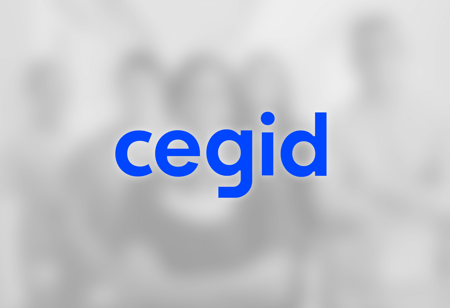Eliminating Faxes in the Healthcare Network: Why Is It So Difficult?
/lgi-electronic-documentation-edm-fax-machine-multi-column-1.jpg?width=800&height=800&name=lgi-electronic-documentation-edm-fax-machine-multi-column-1.jpg)
The article you are about to read was published before October 5, 2023, when LGI Healthcare Solutions was still named "Logibec". It is therefore possible that the text or certain images refer to the company's former branding, as well as the former naming of our solutions. Thank you for understanding.
The number of times the use of fax machines has been criticized in the healthcare network is uncountable. Although these criticisms are redundant, they are entirely legitimate.
The overuse of paper to transmit information is detrimental to the performance of healthcare organizations on several levels: time wasted by handling paper, misplaced documents, double entry of information, slowdowns in the care trajectory, lack of data on administrative processes, increased workload, etc.
Understanding why fax machines are still alive and well in the healthcare network — despite numerous attempts to leave them aside — is one way to equip ourselves to more effectively implement win-win digital transformations.
Risks and Problems Linked to Using Fax in Healthcare
- Time wasted on handling paper
- Sensitive documents being sent to the wrong number
- Additional delays in care pathways
- No gathering of analytical data
- Double entries and transcription errors
- Unauthorized access to printed documents
- Costs of printing, storing, manipulating and destroying paper
- Loss of important documents
Here is an overview of four reasons why it is so difficult to eliminate the use of fax machines in healthcare, followed by an invitation to modernize a paper process that is still too present in the network.
- Reason #1: Perception of Security
- Reason #2: Difficulty in Quantifying the Results of Alternatives to Fax
- Reason #3: The Simplicity of Using Paper and the Universality of Fax
- Reason #4: Lack of Resources Invested in the Adoption of New Technologies
Reason #1: Perception of Security
Security was often cited as a reason for using fax in the healthcare system. Cyberattacks, especially those involving ransomware, are becoming increasingly common in North America, France and around the globe due to the confidential nature of data.
However, we would be wrong to believe that the use of fax protects data from cyberattacks. The truth is that data transmitted by fax often ends up in some computer system anyway. Fax machines only require that data be manually transcribed by staff, a step that could often be eliminated.
Furthermore, faxing involves a risk of security breaches of a different nature than those exploited by cyberattacks. For instance, documents containing sensitive patient data can be sent to the wrong number, exposed to people who are not supposed to have access to them or misplaced altogether, with all the complications this entails for patients.
Reason #2: Difficulty in Quantifying the Results of Alternatives to Fax
There are about as many technological alternatives to fax as there are processes that use it. However, when healthcare managers want to adopt such a technological innovation, they usually need to justify how it will have a positive impact on patients and organizational performance.
How can one obtain the data needed to make such a case? This is often not a simple task. For one thing, fax machines provide little or no data with which to make comparisons. For example, a fax machine is not able to indicate what type of document is sent — and in what quantity — to a specific medical department. Without this data, it becomes more difficult to make time-saving projections to replace a paper process specific to that department.
For this reason, gathering data to demonstrate the positive impact of fax replacement technology is often a laborious and time-consuming task. With the lack of financial and human resources that many facilities face, demonstrating anticipated results can become a barrier to modernization.
Reason #3: The Simplicity of Using Paper and the Universality of Fax
The fax machine may be an aging technology, but virtually everyone in healthcare knows how to use it. A 2017 study by TELUS Health revealed that two-thirds of Canadian physicians use fax machines as their primary means of communication with hospitals and colleagues. This number has likely not changed much since then.
Unlike IT tools, which often differ from organization to organization, a fax machine is a physical tool with similar usage everywhere. In a world of increasing digital systems, the fax machine is a landmark which provides a sense of control over work processes, even simplicity. After all, writing information on a sheet of paper is a relatively quick action that requires little or no training.
However, using paper and fax is not as simple as it seems. Most of the time, it implies a manual transcription of data, which greatly complicates administrative processes, not to mention the risks of errors incurred. In other words, it is easy to press the Start button, but what starts is often complex.
Reason #4: Lack of Resources Invested in the Adoption of New Technologies
Deploying technology that replaces the use of paper and fax is more than installing a new tool: it’s changing a process. It is not uncommon for a healthcare organization to acquire new technology and not use it to its full potential, or worse, sometimes not use it at all. This can happen because of ignorance of new processes, or simply because old habits take over.
Effectively replacing a paper-based process that has been ingrained in staff habits for years, even decades, requires a plan that identifies the key barriers to adopting the new technology. And producing a plan takes time. These challenges exist in all industries, but they appear even more imposing in healthcare, where lack of resources and staff turnover makes it difficult to develop and execute such transition plans.
Fortunately, many digital health companies can take on a significant portion of the planning and execution of the adoption phases of new technologies. Anyone looking to modernize a paper-based process will benefit from learning not only about the technology itself but also about the support offered by vendors.
Where to Start? LGI Healthcare Solutions Can Help You
LGI Healthcare Solutions can help you modernize several paper-based processes, starting with the collection and transmission of clinical information. From this perspective, we invite you to discover the many use cases of its Electronic Document Manager (EDM) solution.
To evaluate how this solution can optimize clinical workflows in your institution and thus alleviate labour shortages, feel free to contact us.






